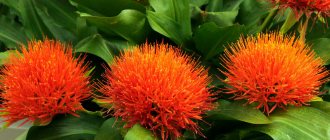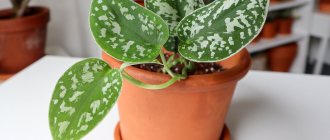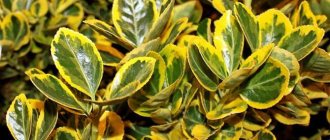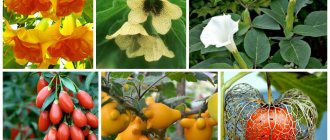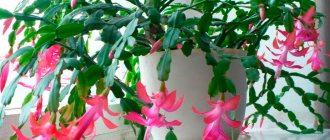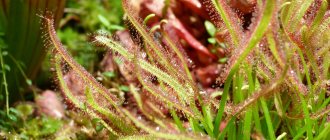If you are a passionate person and would like to try yourself as a gardener and florist all in one, grow a pomegranate on the windowsill! Such a test, ending in success, may well serve as an incentive to start your own garden. However, in most cases, growing pomegranate indoors seems to us to be a fun activity with a touch of adventurism, at the very beginning of which no one would dare to say that in three years he will be able to taste the ripe and juicy fruit from the bowl.
In this article, we will try to figure out whether it is actually possible to grow a tropical fruit tree from a seed on a windowsill, and we will learn about the rules for successfully growing a pomegranate at home in a pot. Let's talk about planting and care. Let's find out how to achieve fruiting. Let's share ideas and advice from experienced flower growers.
Features of pomegranate
Pomegranate belongs to the flowering plants and belongs to the derbennikov family. It is a flowering and fruit-bearing shrub or small tree, which in a number of European countries has the second name “grainy apple”. In the language of botanists, the fruit of this plant is called “pomegranate”. In its natural habitat, pomegranate is most widely distributed in the territory of what is now Tunisia, in ancient times known as the colonial state of Carthage. The current habitat of wild pomegranate is Southern Europe and Western Asia. The common pomegranate is cultivated everywhere in countries with tropical and subtropical climates, including Crimea and the Black Sea coast of Russia.
It seems incredible, but the history of the emergence of the Garnet genus goes back 66 million years ago - to the end of the Cretaceous period of the Mesozoic era! In the civilized world you cannot find a person who is not familiar with the refreshing tart taste of the healthiest of fruits. Our contemporaries, flower growers, who wished to touch a literally mythological plant from ancient times, “write their history of relationships” with the legendary pomegranate, growing it both in the garden and in the room.
In its natural habitat, the height of the pomegranate tree reaches 6 meters, and fruiting lasts until the age of forty. Accustomed to subtropical climates, the plant prefers to bathe in abundant sunlight and breathe hot, moisture-rich air. Such conditions are ideal for seed germination. Otherwise, even if the seed germinates, the seedlings are unlikely to be viable.
When pomegranate is kept indoors, a fairly compact bush grows, not exceeding a meter in height. At the same time, the spherical fruits reach 6 cm in diameter. Small shiny leaves up to 3 cm long are light green in color and have the property, like all deciduous plants, to fall off before the onset of winter dormancy. Thin branches are strewn with thorns. The tree attracts attention with its spreading but neat crown on a slender trunk.
In spring, two types of flowers appear: fertile and infertile. The flowers of the first type are funnel-shaped and deep orange in color. At the end of flowering, they form spherical fruits with a leathery pericarp and a calyx with triangular lobes. The fruits are covered with a brown-red peel and contain up to a thousand units of seeds, “packaged” in two-tier nests. Flowers of the second type are similar to miniature gramophones. Their life cycle does not exceed 4 days. Tropical pomegranate is distinguished by continuous flowering from May to August: the plant literally throws out new buds one by one.
The wait for the first harvest is not so long, only 3 years. The fruits reach maturity in October.
It is easier to propagate pomegranate by cuttings. However, familiarity with agrotechnical nuances will allow you to grow a fruit tree even from a seed. The main condition for a successful outcome of the experiment will be the creation of optimal conditions and competent care.
Types and varieties of homemade pomegranate
In nature, there are only 2 types of pomegranate, namely: the common pomegranate (Punica granatum) and the Socotra pomegranate (Punica protopunica), which is endemic to the Yemeni island of Socotra. The Socotran pomegranate differs from the ordinary one in the pink color of the flowers, as well as in smaller and less sweet fruits. The common pomegranate is described in detail at the beginning of this article.
The dwarf pomegranate is a hybrid, but since it is very popular among gardeners, it has been separated into a separate species called Punica nana. This species is most often cultivated at home, including as a bonsai. The height of such a tree does not exceed 100 centimeters. This species differs from others in that it begins to bear fruit very early. The first flowering is observed already at 3–4 months. And in two-year-old pomegranates, about 10 small pomegranates are observed to form, reaching up to 50 mm in diameter. This species grows well at home due to the fact that it is resistant to low air humidity. This species differs from the ordinary pomegranate in that it practically does not shed its leaf blades during the winter. Thanks to breeders, more than 500 varieties of this species have been born, most of which are cultivated at home. Eg:
- Uzbekistan . At home, the height of such a tree can reach about 200 cm. The rich red, spherical fruits weigh about 120 grams. Their skin is thin, and the grains are wine-burgundy in color and have a sweet and sour taste.
- Baby . The height of the bush, as a rule, does not exceed 50 centimeters. The flowers are collected in bunches of 5–7 pieces or are single. The color of the fruits is brownish-yellow with a red blush, they reach 50–70 mm in diameter, and the pomegranates ripen at the end of the first half of the winter period. Such bushes must be pollinated artificially.
- Carthage . Flowering occurs in May–August. Red flowers reach 40 mm in diameter. Slightly sour, juicy pomegranates are very tasty.
- Shah-nar . The variety was born thanks to Azerbaijani breeders. The red fruits are pear-shaped or round in shape, they are covered with a peel of medium thickness. The taste of the small grains is pleasant, sweet and sour.
- Ruby . The height of such a tree is about 0.7 meters. Unlike other varieties, this one has flowers of a more saturated ruby color. If the plant is well cared for, its pomegranates will weigh about 100 grams and reach 60–80 mm in diameter.
The following varieties are popular among gardeners: Kzyl-anar, Vanderful, Ulfi, Lod-Zhuar, Ak-Dona, Gyuleysha red and pink, Purpurovy, Salavatsky, etc.
If you have a desire to grow pomegranate at home, then you can choose not only compact, but also vigorous varieties. The fact is that in indoor conditions they very rarely grow more than 200 cm.
HOW TO GROW POMEGRANATE ON THE WINDOW
Planting/growing
In room conditions, the pomegranate tree is cultivated in several stages:
- growing season;
- time of winter rest;
- awakening;
- resumption of flowering and forcing.
The most problematic aspect of keeping a subtropical resident in a city apartment with central heating in winter and low air humidity will be compliance with the natural development cycle. If you pay due attention to the plant at each stage, then its vital needs can be satisfied in central Russia.
Before purchasing a pomegranate seedling in a store or nursery, choose your purchase responsibly. Carefully inspect both the above-ground part and the part hidden in the container. The leaves should be glossy and bright green in color. Carefully remove the bush along with the earthen lump from the container and evaluate the root system for health. It should be well developed and have white healthy roots. Experienced flower growers recommend not throwing away the label with the name and schematic description of the care requirements. This can help you navigate the rules for maintaining this particular plant and avoid mistakes.
One of a number of arguments in favor of choosing an exotic plant is the mild requirements for the composition of the soil for indoor pomegranate. Any ready-made soil mixture offered by flower shops will do. But among the entire range, the most favorable for pomegranate will be a loose substrate with a neutral PH7 reaction, which has high air and moisture permeability properties. Pomegranate grows well in special soil for begonias or roses.
If it is not possible to purchase a ready-made substrate, prepare it yourself according to the following recipe:
- humus (compost) - 1 part;
- garden soil - 2 parts;
- sawdust - ½ part;
- river sand - ½ part;
- high-moor peat - ½ part.
For a flower pot, it is preferable to choose a fairly wide and deep container with drainage holes and a tray. To prevent stagnation of moisture near the root system, be sure to form a drainage layer of expanded clay or other material with suitable properties.
What to do if the pomegranate does not bloom or set fruit
If your pomegranate is more than three years old, and it has never bloomed or produced fruit, then you need to reconsider the conditions of maintenance and care methods. Check if you are doing everything correctly:
- The average daily temperature favorable for budding is 16... 18 °C.
- There will be no flowers or fruits if the pomegranate is in the shade and doesn’t get enough sun.
- Irregular watering and dry soil lead to crop failure.
- When there is excess moisture, the plant actively grows shoots and leaves to the detriment of fruiting. The same happens when applying nitrogen fertilizers. Potassium and phosphorus should predominate in fertilizing. Look at the composition of the mixtures and concentrates you buy.
- The most prolific are 1–2 year old shoots 10–40 cm long; excess pruning interferes with their formation.
Transfer
There is no need to rush to replant a pomegranate, like any other indoor plant purchased in a store. The beginner must recover from the stress caused by the change in conditions and acclimatize to the new place in a few days.
When transplanting pomegranates at home, experienced gardeners recommend choosing a slightly cramped container. They justify this choice by the peculiarity of pomegranate to form a much smaller number of sterile bell flowers in a tighter pot.
The bush is first transplanted at one year of age. When the plant reaches 4 years of age, replanting is stopped, annually replacing the top devastated layer of soil with fresh and nutritious one. Only as a last resort, when it has become clearly noticeable that the root system is too crowded in the pot, do they risk disturbing the tree by replanting. For this purpose, a gentle version of “relocation” is used - transshipment along with an earthen lump. They adhere to the following rule: the diameter of the new pot should not exceed the size of the old one by more than 3 centimeters.
How to care for pomegranate at home
With good care at home, an indoor pomegranate tree can live for more than 50 years and bear fruit all the time. It can be cut and taken outside in the summer. It needs timely watering, protection from pests, and a favorable indoor microclimate. Pomegranate needs fertilizing and loosening of the soil.
When the plant does not bloom or bear fruit, it can be rotated, a crown formed, or pruned. It should be taken into account that flowers and fruits grow on indoor pomegranates at the end of the branches. If there is no desire to shape the tree, do minimal pruning, removing only the weakest and driest shoots.
Indoor microclimate
In spring and summer, during the intensive development of pomegranate, the air temperature in the room should be +18...+26 °C. In winter, when the plant needs rest, it is advisable to reduce it to +12...+16 °C.
Indoor pomegranate loves high air humidity, therefore, when it is warm, it is advisable to moisten the foliage daily from a spray bottle with warm water. The lighting should be bright but diffuse.
How to water pomegranate at home
The frequency of watering a pomegranate in a pot is an important component of home care; it depends on the time of year and general humidity. In summer, water approximately once every three days with settled or spring water. Its temperature should be several degrees above room temperature. In winter, watering is reduced to once a week. When the room is hot and dry, moisten the earthen ball more often; it should not dry out.
The plant should also not be overly flooded with water.
Watering is carried out as the soil dries out. If there is a strong smell of mold from the soil, the plant needs to be replanted and the frequency of moistening reduced.
Important! The next day after watering, loosen the soil in the flower pot with pomegranate so that the roots can breathe.
How to feed homemade pomegranate
Fertilize pomegranate once every two weeks or ten days in spring and summer. To do this, use complex mineral fertilizers intended for flowering indoor plants. If you intend to use the fruits for food, you need to ensure that nitrates do not accumulate in the soil. Nitrogen is needed only in the spring, when the plant wakes up after a period of winter dormancy. Then the composition of the fertilizer should be dominated by potassium, phosphorus and essential microelements.
Trimming
Indoor pomegranate tolerates pruning well, but it must be correct and timely; this procedure is usually carried out in the fall to reduce the area of evaporation and make it easier for the plant to overwinter. You can also prune the tree at the end of winter, before intensive growth begins. When pruning a pomegranate, you can be creative, shaping the tree to your liking. It is very easy to make a bonsai from the plant, a braided trunk, or create a spherical or cone-shaped crown.
Top dressing
To activate the growth of a plant during the seedling period, it is watered with a water-ash suspension prepared at the rate of 1 tsp. ash per 1 liter of water.
Fertilizing the pomegranate tree in spring and summer is carried out twice a month, using a special universal fertilizer for indoor plants in liquid form. Keep in mind that if you expect to grow fruit, you should prefer organic fertilizers, such as bird droppings, to mineral fertilizers. When fertilizing pomegranate, it is important to know when to stop: too much nitrogen fertilizer can prevent the formation of fruiting flowers and lead to a lack of harvest.
History of selection
The first mention of a houseplant was in 1803 .
Since then, many additional varieties have been developed, the taste and appearance of which vary significantly. For example, in the USA, breeding specialists were able to obtain a pomegranate with an atypical fruit color - black and purple.
Initially, to obtain a dwarf variety, common pomegranate was used as a base. However, subsequently crossing was carried out with other fruit crops , which gave many completely viable subspecies.
Trimming
Pruning during the off-season is a great way to form a pomegranate into a nice standard tree. You can choose any of the options: a miniature tree with a low trunk and 4-5 skeletal branches, or a compact bush with 3-4 skeletal branches. Later, as it grows, 4-5 branches of the second order are laid on the skeletal branches, and then the third.
Sanitary pruning of pomegranate allows you to get rid of thin, weak, lifeless or damaged shoots, as well as fatty and root growth. Old branches that no longer bear fruit are also removed. Prevention of crown thickening will be pruning on the buds directed towards the inside.
When pruning, you should remember that the fruits will appear on the shoots of the current year.
Bloom
Flowers come in two varieties:
- Campanulates (male). Make up 90% of the total. The lifespan is 2 or 3 days, but thanks to the daily appearance of new buds, the plant does not lose its attractiveness for a long time.
- Pitcher-shaped (female). Based on such flowers, a thickening is clearly visible - the ovary. It is from them that the fruits - pomegranates - are formed.
Bell-shaped flowers appear the very next year of cultivation, they are very numerous. You will have to wait 5–7 years for female flowers to appear.
Indoor pomegranate can be purchased as a seedling, so it will bloom faster and begin to bear fruit. A bush grown with your own hands from seeds will bring no less joy.
Care
Caring for indoor pomegranate at home is not as difficult as it might seem. Knowing the secrets of success for experienced flower growers will help you understand the basic parameters of the content:
- temperature - during growth, flowering and fruiting in the range from +18 to +25°C, during winter dormancy from +12 to +15°C, but not lower than +6°C;
- lighting - the brightest place with shading from direct midday rays in summer; in winter, daylight hours are artificially extended to 10 hours;
- watering - abundant and frequent in summer, significantly limited in winter;
- humidity - in hot weather it needs to moisten the leaves or air around the bush;
- propagation by seeds, grafting or cuttings.
general description
Dwarf pomegranate is a bush with many oblong leaves and large red flowers. Leaf color is pale green .
The cups look like a bouquet, in which wavy scarlet or pinkish petals are tightly gathered.
There are plant species with yellow or white petals, but the most common is the dwarf pomegranate with red flowers. He belongs to the Derbennikov .
The rest period of the bush is short and occurs only after the leaves have completely fallen. Some flowers still appear until the end of autumn, when the fruits ripen.
REFERENCE! The fruits look like fairly large berries about seven centimeters in diameter, dark red or orange . Each fruit contains more than a thousand seeds, located in separate two-tier chambers.
An edible covering surrounds each of the seeds. The berries differ in taste from regular pomegranate. Most often, this plant is used for decorative purposes, and so that the fruits do not deplete the bush, they are often removed.
On our website we have also prepared an article about growing and caring for indoor Baby pomegranate, which, among the many types of pomegranate, attracts gardeners with its unpretentiousness, beauty and unique properties.
You can visually see the dwarf Carthage garnet in the photo below:
Temperature
In the warm season, when pomegranate grows, blooms and bears fruit, the optimal temperature is moderate in the range from +18 to +25°C. Therefore, in the summer there should be no difficulties in indoor maintenance. The plant, which arrived from the subtropics, can tolerate heat, but sharp fluctuations in air temperature can cause the fruit ovary and leaves to fall off.
During winter dormancy, it is important to ensure coolness from +12 to +15°C, but not lower than +6°C.
Such conditions are necessary for the plant to fully rest and prepare for the upcoming flowering and ripening of fruits.
Plant characteristics
This deciduous subtropical plant rarely reaches a height of two meters in cultivation. In the wild it can grow up to six meters. In indoor cultivation, its height is unlikely to exceed 80-100 cm, but its low growth will not affect the fruiting of the tree.
Pomegranate in summer
By the way. Dwarf pomegranate is popular, along with lemons, oranges, other citrus fruits, home cultivation of pineapple and coffee trees.
The fruit of the plant is a berry, which consists of 6-12 sections, arranged in two rows and filled with more than a thousand seeds. It is from these seeds that pomegranate is grown.
Berry with seeds
By the way. Pomegranates begin to bear fruit in the garden at the age of three, and with careful care they can continue bearing fruit for up to forty years. Dwarf pomegranate is capable of bearing fruit in the second year, but this will last for a maximum of seven years. And there is a high probability that the fruits will not appear at all.
Nevertheless, growing any indoor exotic plant, which is impossible, due to climatic conditions, to have in a garden at a dacha near Moscow, is an exciting activity.
Blooming indoor pomegranate
Prices for indoor pomegranate seeds
indoor pomegranate seeds
Lighting
The pomegranate tree's light requirements vary depending on the time of year. In spring and summer, it would be good to place a container with a tropical alien on a window with a southern, western or eastern orientation. Even prolonged cloudy weather outside should not deprive pomegranates of a generous portion of lighting. In this case, the lack of light is compensated by supplementary illumination with an LED phytolamp. The bush loves to bask in the rays of the sun, but it will not like the activity of midday ultraviolet radiation, and at this time the plant should be shaded. Among the pomegranate's preferences is fresh air, so it needs to be offered air baths on the balcony, veranda or in the garden. For lack of anything better, normal ventilation of the room will do, as long as it does not provoke destructive cold drafts.
In autumn and winter, the brightest places in the apartment are determined for pomegranate. The pot with the bush is moved as close as possible to the window glass, and a heat-insulating material, for example, a polystyrene foam plate, is placed under the tray so as not to freeze the flower. At this time, the pomegranate will rejoice at any ray of sunlight, because the activity of the luminary is small and will not cause harm to the plant. To extend the short natural daylight hours to 10 hours, LED lighting is used. If you neglect the lighting rules in winter, the pomegranate will stretch out unsightly and lose its former charm and decorativeness.
Hibernation of indoor pomegranate
Does indoor pomegranate need hibernation?
If you are unable to provide your pet with constant good lighting, it makes sense to talk about the winter dormancy period of the pomegranate. Usually it occurs from November to February. At this time, it is necessary to place the flower in a cool room, water less, do not feed, and wait for spring. Lowering the temperature in a city apartment is problematic. You can place a flower pot close to the window glass, separating it with polyethylene from the rest of the room. Or you can take the pomegranate into a heated basement during this time.
But, we claim that in winter, at normal room temperature, good lighting for up to 12 hours. per day (with the help of a powerful phyto lamp) pomegranate will feel cheerful and comfortable. The formation of numerous flower buds will not stop at this time.
Humidity
The pomegranate tree is not particularly sensitive to air humidity. It will tolerate a humidity level of 40-50% well. However, florists recommend that on hot days, to ensure the pet’s comfort, spray the leaves with soft water from a spray bottle from time to time, or, if you have the patience and time, wipe with a damp sponge. The most effective way to achieve the desired level of air humidity in an apartment is to use an electric humidifier. The easiest thing to do would be to place a tray with wet pebbles or expanded clay next to the bush.
Possible problems
If you do not care for the bush correctly or do not provide it with suitable growth conditions, then problems may arise with it:
- Yellowing of the tree . This problem is very common. First, the bush must be carefully examined for the presence of harmful insects, in particular spider mites. If there are no pests, then the bush most likely turns yellow due to the excessively high air temperature in the room. Yellowing may also be due to insufficient moisture in the soil mixture, but in this case dark spots form on the leaf blades.
- Flying leaves . The flying of leaf blades may be a consequence of their yellowing, and this may be due to the fact that pests have settled on the bush, for example, spider mites, or the plant is affected by some disease, as well as due to excessively poor watering or the fact that in the room very hot. The loss of leaves may also be due to the fact that the plant is preparing for a dormant period, because it is deciduous. In this case, the process is completely natural and there is no need to be alarmed.
- Drying of the tree . Drying of the foliage may be due to the fact that the air humidity in the room is excessively low or to problems with the root system that arise when the tree is not watered correctly. In this case, the substrate in the pot should be sniffed; if it has a strong smell of mold, then the bush will need to be transplanted into a fresh soil mixture. During replanting, carefully inspect the root system of the bush and cut out all rotten areas. Wounds on the surface of the root system must be sprinkled with coal powder.
Watering
From spring to autumn, pomegranate is watered abundantly. Irrigation is repeated as soon as the top layer of the earthen clod dries. When the plant is actively blooming, watering procedures are reduced. In a state of winter dormancy, the bush does not need moisture, so watering is significantly limited to scanty.
The surest way is to apply moisture directly under the root through a watering can with a long narrow groove. This prevents drops of water from getting on the leaves. A nuance that should not be neglected: irrigation water should be approximately two degrees warmer than room temperature and kept away from chlorine for at least a day.
Planting material
For the seed growing method, it is best to choose material purchased in specialized stores.- Seeds for planting should only be fresh, as they lose their viability very quickly.
- Visually healthy seeds, containing all the substances necessary for germination, should be hard, with a pleasant ivory tint.
- You only need to collect material for sowing yourself from large, fully ripened fruits.
- It is imperative to remove the pulp covering the seeds to prevent rotting.
- Planting material is soaked for a day in water or in solutions of potassium permanganate, Epin or Zircon, but the liquid should not completely cover the seeds.
Reproduction
In floriculture, it is possible to obtain a young pomegranate tree in several ways: propagated by seeds, cuttings or grafting. It is important to remember an important nuance here. A plant grown from a seed may lose the varietal characteristics of the mother specimen. At the same time, cuttings make it possible to fully preserve the parental characteristics of the variety.
Since many flower growers are interested in the question of how to properly grow pomegranate from seeds at home, let’s take a closer look at it.
To implement this budget method of propagation, you will have to buy a fully ripened pomegranate fruit without any external damage. Then the planting material needs to be prepared for germination. The fresher the seeds, the faster they will sprout.
The seeds are removed from the fruit and freed from the pulp by squeezing out the juice, but care is taken not to deform them. Rinse under running cold water and blot with paper towels to prevent the onset of rotting processes. Dry for some time.
To sow seeds, choose a clay pot, pour a layer of expanded clay drainage on the bottom, and on top - a purchased coconut substrate or prepared soil mixture:
- river sand;
- peat;
- garden soil.
The dried seeds are laid out at a distance of 5 cm from each other in moist soil, buried one centimeter and dug in. Then the crops are irrigated using a spray bottle. To create a greenhouse effect, cover the pot with glass or plastic wrap. The improvised greenhouse is placed in a warm place illuminated by sunlight. Monitor the moisture content of the crops. If the soil is dry, moisten it a little.
Under favorable conditions, high-quality planting material will produce the first shoots in about 2 weeks. You will need to gradually remove the glass from the surface of the pot so that the sprouts adapt to the environment. Active growth of seedlings will serve as a signal to finally open the greenhouse. Next, an audit is carried out to cull weak and deformed specimens in order to leave the most viable ones for further cultivation.
The appearance of the first fruits from a plant obtained from the seeds of a purchased pomegranate can only be expected after 7 years. If you use indoor pomegranate seeds to sow seeds, you will be able to try the miniature fruit for the first time within 2 years from the date of planting.
Gardeners consider cuttings to be the most reliable planting material. If the plant is not grown for fun, then it becomes important that cutting pomegranates at home allows you to preserve the genetic information of the parent plant, including the taste of the fruit and immune characteristics.
At the beginning of spring, cuttings up to 15 cm long are selected for planting. The middle part of a two-year-old branch with three to four buds is cut out. Then they proceed in the following sequence:
- place the cuttings for 2 days in a root formation stimulator diluted with water, for example, “Kornevin”;
- place the cuttings in a container with nutrient soil;
- after 20-30 days, you can notice the appearance of primary roots on the cuttings. Flower buds will begin to develop on new branches;
- you can transplant the rooted cuttings into a larger container with light sandy soil;
- When the tree gets stronger and reaches a height of 50 cm, it can be transplanted into a permanent, spacious container and decide whether to leave it to grow indoors or plant it in open ground.
When the root system has developed so much that it fills the entire space of the container, it is better not to replant the plant; it will be enough to change the top layer of soil twice a year to a more fertile one. It is recommended to start fertilizing with fertilizers during active growth and at the fruiting stage.
To obtain a real varietal pomegranate, take the rootstock of a bush, which is grown from a seed, and graft a varietal cutting from a fruiting bush. Grafting is carried out using various methods, depending on the size of the rootstock and cuttings. Of the more than 150 existing grafting methods, flower growers prefer only two: simple copulation and copulation with a tongue, in a split, behind the bark, in a butt, in a side cut. An indicator of successful grafting and an assessment of your efforts will be the flowering of pomegranate in 3-4 years.
Properties of pomegranate: harm and benefit
Useful properties of pomegranate
Pomegranate is one of the healthiest fruits. The fruit contains vitamins P, C, B12, B6, fiber, sodium, iodine, phosphorus, iron, potassium, manganese, calcium and magnesium. The composition of pomegranate juice includes sugars - fructose and glucose, malic, tartaric, citric, oxalic, succinic, boric and other organic acids, sulfate and chloride salts, phytoncides, tannin, tannins and nitrogenous substances.
Due to the fact that pomegranates contain all these substances that are very useful and necessary for the human body, they have healing properties. Such fruits help quench thirst, strengthen the nervous system, vascular walls and immunity, as well as the formation of red blood cells and the production of hemoglobin. For a long time, an infusion of the flowers and fruits of this plant has been used as a hemostatic agent. Elderly people who have undergone surgery are recommended to eat pomegranate to quickly restore strength. It contains a lot of vitamin K, which is necessary for normal metabolism in connective tissues and bones, and in particular for the absorption of calcium.
This plant helps slow the development of osteoarthritis, while it eliminates swelling and inflammation of cartilage tissue. Pomegranate juice, among other things, normalizes blood pressure, and it is recommended to drink it as a hematopoietic agent for diseases of the heart, kidneys, liver, circulatory system or lungs. This juice also contains estrogens, which help alleviate menopause and also fight insomnia. It is very important for vegetarians to include pomegranate in their diet, since its juice contains 15 amino acids, and almost half of them can be found mainly in meat. Thanks to the fact that a vegetarian will regularly eat pomegranate, he will not feel a lack of animal proteins. The juice also has choleretic, anti-inflammatory, analgesic and diuretic effects on the body. This plant is also rightfully considered an excellent remedy for scurvy, uric acid diathesis, atherosclerosis, headaches and gastrointestinal disorders. Experts recommend regularly drinking the juice of this plant for people who live in an area of high radiation, have been exposed to radiation, or work with radioactive isotopes. It is also recommended to drink it for anemia, hypertension, malaria, bronchial asthma and diabetes. The peel of the fruit contains alkaloids, so it is used as a powerful anthelmintic. A decoction of the peel is used for inflammation of the kidneys, eyes, liver and joints. It is also used for intestinal disorders and for gargling a sore throat. The powder prepared from the peel is lightly fried in cow or olive oil, the resulting mixture is used for burns, abrasions and cracks, and also as a mask for oily skin.
Pomegranate seeds are a powerful remedy that increases intestinal motility. They also contain very valuable oil, which contains fat-soluble vitamins E and F, which promote rapid healing of wounds, rejuvenation, protection of the human body from cancer and regeneration of skin cells. Pomegranate extract promotes rapid restoration of the epidermis exposed to prolonged exposure to sunlight. The dried white films inside pomegranate are added to tea, as they help normalize the nervous system, eliminate anxiety and agitation, and fight insomnia.
In official medicine, decoctions and tinctures are used made from the flowers, bark, fruits, peel and seeds of this plant, which help with stomatitis, burns, anemia, diarrhea, conjunctivitis and other diseases.
Pomegranate peel and seeds, is it worth throwing away 12 unique healing properties of pomegranate peel
Contraindications
Pomegranate juice should not be drunk if you have a peptic ulcer of the stomach or duodenum, or if you have gastritis with high acidity. If necessary, the juice can be greatly diluted with water. Since pomegranate contains a lot of acids, it can cause destruction of tooth enamel. In this regard, when you eat a pomegranate or drink the juice, your teeth should be thoroughly brushed and rinsed. Since this fruit has a constipating effect, it can cause constipation in people with digestive problems. Remember that the peel contains toxic substances, so a decoction from it can be taken only after consulting a doctor. In case of an overdose of the decoction, a significant increase in blood pressure, vertigo, sharp deterioration of vision, weakness, convulsions and irritation of the mucous membrane are observed.
Indoor pomegranate - how easy it is to care for it at home
Pests and diseases
The most insidious disease found in pomegranate trees is cancer of the branches (roots). It is caused by mechanical trauma to the cortex. If the disease is not very advanced, the plant is either cut back to healthy tissue, smearing the cuts with garden varnish, or cut “to the stump” in the hope that it will recover.
Signs of gray mold may suddenly appear. Rescue in this case is possible through treatment with a fungicidal preparation or Bordeaux mixture solution.
The pomegranate tree may be attacked by aphids or spider mites. Possible attacks by mealybugs, scale insects, codling moths, and whiteflies. To get rid of one pest or several at once, the plant is sprayed with a systemic insecticide.
According to a long-standing legend, a pomegranate tree growing in a house serves as a talisman for its inhabitants. It is a symbol of beautiful love and strong family ties. Having grown a magic tree with your own hands, you gain its powerful protection in subtle matters, and your household will be happy to taste the treasured “grainy apple”.
| Growing | The temperature during intensive growth is from 18 to 25 degrees, during the dormant period - from 12 to 15 degrees. Prefers bright diffused light with shading from the midday sun. Watering during the period of active growth is frequent and plentiful; during the flowering period, watering is reduced, and in winter - sparing. |
| Humidity | In the hot season, in the evenings it needs to moisten the foliage with warm water from a sprayer. |
| Feeding and pruning | In the spring-summer period, fertilize 2 times a month with a mineral complex fertilizer with a low nitrogen content. Needs formative pruning in February. |
| Flowering period | Once a year, flowering lasts from May to August. |
| Landing, transplant | Young trees need annual replanting. Bushes older than three years are replanted only if necessary, after the roots no longer fit into the container. |
| Reproduction | By seeds, cuttings or grafting. |
| Pests | Mealybugs, spider mites, scale insects, aphids, codling moths and whiteflies. |
| Diseases | Branch cancer, root rot. |
Growing problems and ways to eliminate them
Strong, well-groomed pomegranate plants are attacked by diseases and pests extremely rarely, and if this happens, then it is necessary not only to deal with the problem, but also to eliminate its cause.
Possible pests of pomegranate
Pests can very quickly lead to the death of a plant or greatly weaken it, making it impossible to bloom and bear fruit. Therefore, if you notice any negative changes in pomegranate foliage (it is the one that suffers first), you should determine the type of parasitic insect and promptly eliminate it.
Photo gallery: signs of pomegranate pest damage
Aphids on a plant are easy to spot
Scale insects leave noticeable marks on the foliage
Mealybug covers the leaves with a sooty coating
Whitefly activity causes leaves to curl and fall off.
It is not so easy to detect spider mites; the damage is minor at first
Table: pomegranate pests, signs of their presence and ways to eliminate them
| Pest | Signs of parasitism | Fighting methods |
| Mealybug | The plant is stunted, does not bloom, the leaves turn yellow and fall off. A sooty coating often appears. |
|
| Spider mite | Spots and light cobwebs appear on the leaves, and they may become deformed. | The systemic drug Aktara is effective. The day before treatment, it is advisable to wash the plant. Prevention: maintaining high air humidity. |
| Shchitovka | When the pest appears, light brown spots form on the leaves and the shoots become bent. | The scale insects are removed with a cotton pad soaked in alcohol and washed twice every other day with soap suds. Next, use Bitoxibacillin or Aktar. |
| Aphid | The leaves become shiny and sticky. Sometimes a gray or black coating forms on them. |
|
| Whitefly | Whitish spots are noticeable on the leaves; larvae are located on the lower part of the leaf. The plates become discolored, curl and fall off along with the buds. The adult pest is a small white butterfly with two pairs of narrow wings. |
|
Photo gallery: preparations for pest control of pomegranate
Green soap is an effective insecticide Fastak is terrible for whiteflies Bitoxibacillin will cope with scale insects Mealybugs can be eliminated with Fitoverm Actellik eliminates aphids
Inta-Vir is effective in the fight against aphids and whiteflies. Aktara is a broad-spectrum insecticide.
Glue traps attract insects with pheromones
Problems not caused by insects
Pests are not the only thing that can worry pomegranate owners. In the garden, the plant may be affected by branch cancer. Externally, this disease looks like cracking of the bark on the branches with spongy swellings along the edges; the shoots or plant completely dry out. The reason is previous mechanical damage to the branches, freezing during wintering. The development of the disease is stopped by removing the affected parts of the plant or cutting it to a stump in order to obtain healthy growth.
Branch cancer can lead to complete death of the plant
In addition, problems arise, the cause of which lies in improper care and characteristics of the variety. Sometimes natural changes are mistaken for the problem.
Pomegranate trees bloom, but there is no fruit
There are many reasons that prevent the desired fruit from blooming in the place of a flower. Pomegranate flowers fall without forming an ovary if:
- The plant is cold: the planting location was poorly chosen or the pomegranate freezes in winter. In this case, flowering begins late and the fruits fall off. We need a transplant and better insulation for the winter.
- The pomegranate variety is not self-fertile (i.e. it requires a pair of plants) and bears fruit once every two years. In the first case, you need to plant more seedlings or try to pollinate the flowers manually (with a brush, picked dusty flower), in the second - just wait until next year.
- The pomegranate blooms with two types of flowers, and one of them does not bear fruit: the ovary can only be expected in the place of a short, pitcher-shaped flower with a long pistil. To stimulate the formation of such flowers, you can treat the plant with Bud, Ovary, etc., and also pick off barren flowers.
- Watering is insufficient, and the plant sheds its ovary to protect itself from drying out. Adjust watering.
- The pomegranate did not overwinter or did not overwinter correctly: it is during the dormant period that the plant accumulates strength for fruiting.
- A pot that is too large encourages many plants to become fattened. Do not rush to transplant the pomegranate into a container where there will be too much room for its roots.
- Insufficient or incorrect fertilizer also does not contribute to the formation of ovaries.
- The flowers were cut off by a strong wind. There is no need to be upset, because pomegranate produces flowers almost all summer, and if there are no other problems, there will definitely be a harvest by autumn.
- The plant is still very young and not ready to bear fruit. Pomegranate from a seedling is ready to bear fruit in the second or third year, from a seed - in the third or fifth, depending on the variety and conditions.
- It is possible that your pomegranate is an ornamental variety. In this case, you will have to come to terms with the fact that the plant will only please the eye, but not the taste.
The main condition for the flowering of indoor pomegranate is pruning, since it blooms only on the branches of the current growth. Almost every year I “sadistically” prune my plant, and it blooms and bears fruit beautifully, but this year I got wrapped up and forgot about it! And as a result - not a single flower!
irtera
https://www.lynix.biz/forum/pochemu-ne-plodonosit-komnatnyi-granat
Blooming pomegranate is a magnificent phenomenon that pleases the eye
Pomegranate leaves are drying up
Yellowing leaves worry any gardener. Reasons that may cause this phenomenon:
- Lack of moisture naturally leads to drying out of leaves or entire shoots. Make sure the soil does not dry out.
- Excessive watering, causing rotting of the roots, is also externally manifested by yellowing of the leaves. The plant needs to be transplanted into dry soil, after removing the rotten roots and sprinkling them with coal. Adjust watering.
- Direct sunlight and lack of air circulation lead to wilting. Move the pomegranate away from the window, cover it with a screen or curtain. In summer, it is advisable to take it out onto the balcony or into the garden.
- Pomegranates don’t really like dry air either. Spray it, and in a critical situation, cover the plant with a bag for a while: the humidity of greenhouse conditions will help the pomegranate to recover.
- Insect parasitism (usually aphids or scale insects) can lead to damage to foliage. Treat the pomegranate with an insecticide.
- The beginning of leaf fall is the natural process of shedding leaves in order to enter a dormant period. Help the plant: reduce watering, take the pot of pomegranate to a cool, not very bright room until February.
Yellowing pomegranate leaves are a sign of improper care, ill health, or the beginning of a dormant period.
Indoor pomegranate does not bloom
If there is no flowering, first of all evaluate whether the pomegranate has enough heat and light. If this is all right, think about whether you are fertilizing the plant enough. Everything is normal - see if you cut and pinch the shoots correctly. Just regular pruning stimulates the pomegranate to form flower buds on new branches . And the plant gains strength for flowering during the winter; during this time it should not dry out or freeze. Another reason: your plant is a so-called “wild plant”, a specimen grown from seed, incapable of flowering and fruiting.
Let's play gardeners
Small nana pomegranate fruits are not suitable for serving: they are tasteless, and their pulp is as big as a nose. Therefore, flower growers are often struck by the thought: is it possible to grow a real garden pomegranate in an apartment?
The answer is simple: yes, you can, but there will be more fuss with him than with a tiny nana. And it’s not just a matter of size, although this is also important, because a garden pomegranate will require a large tub and a lot of space in the apartment. It will be a bit cramped for him on the windowsill; he will have to be kept on the loggia.
The main thing is that the garden pomegranate is a completely deciduous plant; it simply needs winter dormancy with a temperature of about +5ºС. In addition, such a tree needs ultraviolet light; it would be nice to keep it somewhere in the countryside, in the garden all summer. If you can do without this, place the pomegranate on an open balcony, still shading it from the midday sun.
You can propagate garden pomegranate for indoor use using the same methods described above. For obvious reasons, cuttings are preferable, but many also plant seeds from fruits purchased at the market. Just don’t forget that varietal qualities will most likely be lost.
By the way, about varieties. There are some varieties of garden pomegranates that do not bear fruit, but have very beautiful, large flowers. They are kept in rooms precisely as ornamental plants. An example would be the varieties “Flore Pleno” or “Double Flower” (the latter has multi-colored petals).

